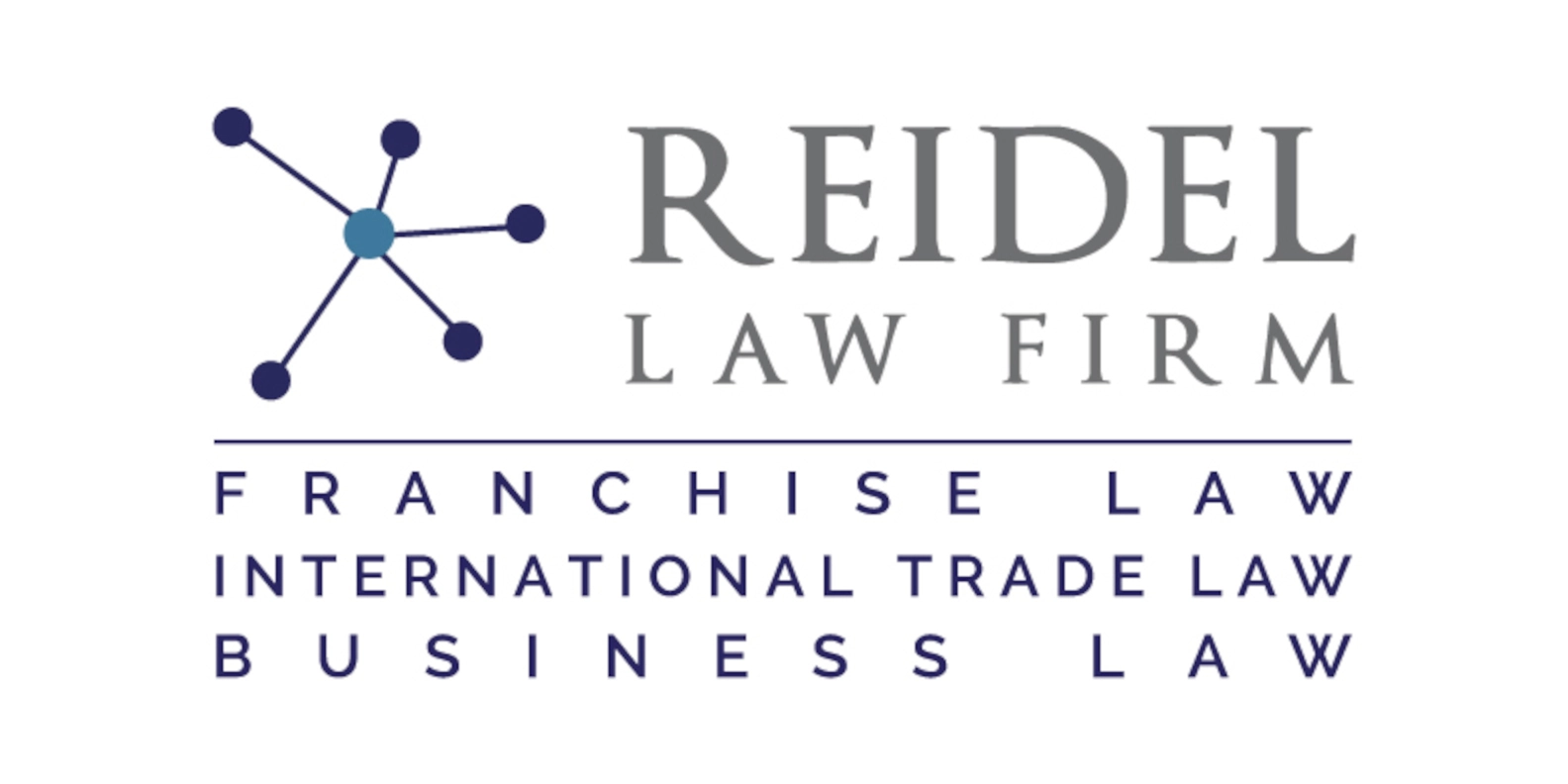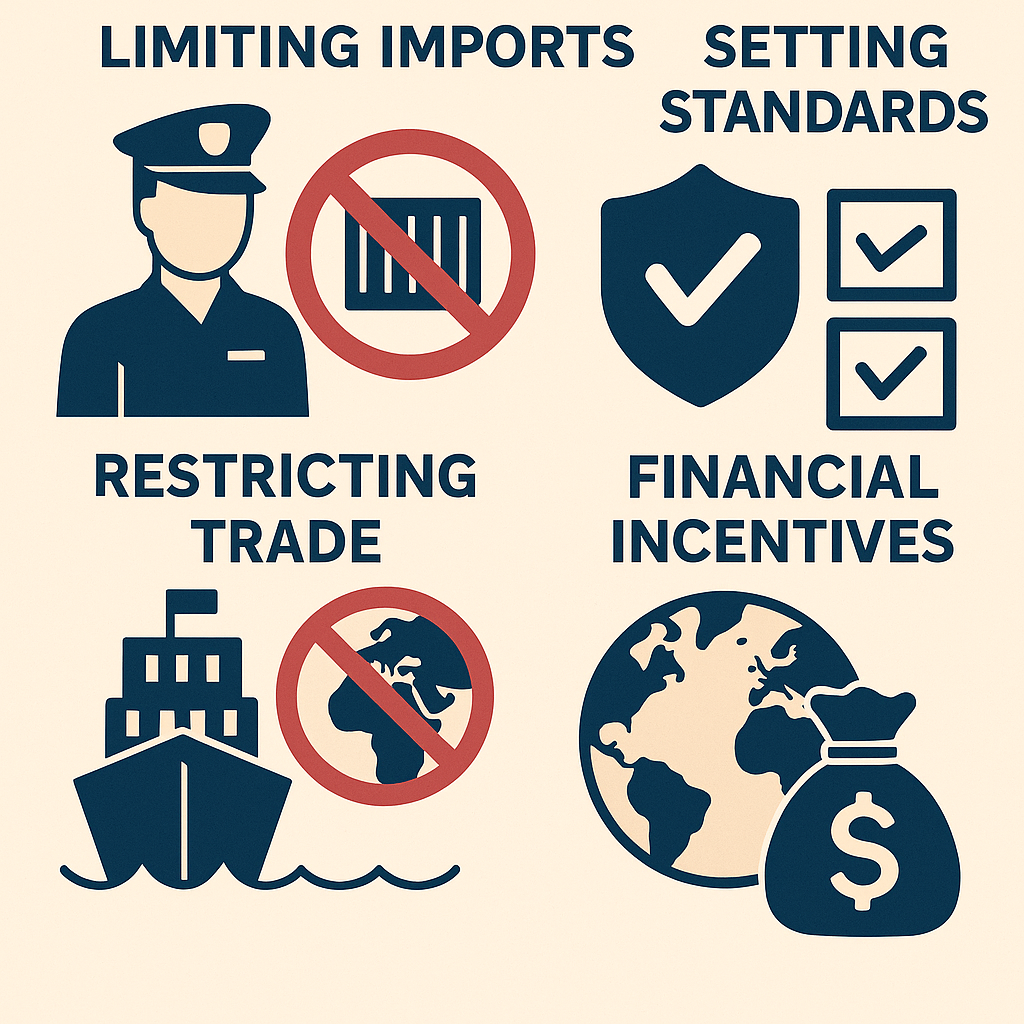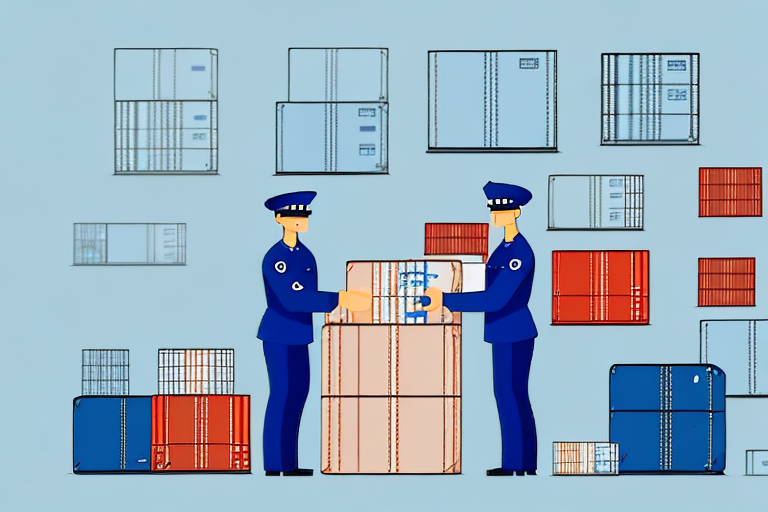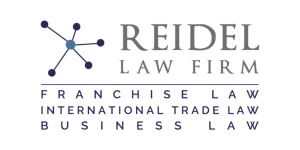In today’s globalized world, ensuring the security of international trade is of utmost importance. The Customs-Trade Partnership Against Terrorism (C-TPAT) program plays a crucial role in protecting the supply chain and preventing terrorist attacks. Understanding the basics of C-TPAT is essential for all stakeholders involved in international trade. This comprehensive guide will provide you with all the necessary information about C-TPAT, its benefits, challenges, and best practices for maintaining compliance.
Understanding the Basics of C-TPAT: A Comprehensive Guide
C-TPAT is a voluntary program led by U.S. Customs and Border Protection (CBP) that aims to enhance supply chain security and facilitate the flow of legitimate trade. The program encourages partnerships between CBP and the business community to strengthen security measures and mitigate the risk of terrorism. Becoming a C-TPAT certified partner is a strategic decision for companies engaged in international trade, as it provides numerous benefits and opportunities.
One of the key benefits of becoming a C-TPAT certified partner is the expedited processing at U.S. ports of entry. C-TPAT certified companies are given priority status, which means their shipments are less likely to be delayed or subjected to extensive inspections. This not only saves time and reduces costs for the company, but also ensures a smoother and more efficient supply chain process.
Why C-TPAT is Vital for International Trade Security
The importance of C-TPAT cannot be underestimated when it comes to international trade security. By adhering to C-TPAT principles, companies can reduce the risk of their supply chains being exploited by terrorists or criminal organizations. C-TPAT certification also helps to enhance overall supply chain efficiency, reduce customs delays, and gain a competitive edge in the global market. It is essential for companies to recognize the crucial role C-TPAT plays in securing the international trade landscape.
One of the key benefits of C-TPAT is its ability to foster collaboration and information sharing among supply chain partners. Through the program, companies are encouraged to establish strong relationships with their suppliers, carriers, and other stakeholders. This collaboration allows for the exchange of valuable intelligence and best practices, which can help identify and mitigate potential security risks. By working together, companies can create a more secure and resilient global supply chain network.
In addition to its security benefits, C-TPAT also offers companies a range of operational advantages. For example, certified C-TPAT members are eligible for expedited processing at U.S. borders, reducing the time and cost associated with customs inspections. This streamlined process not only improves supply chain efficiency but also enables companies to meet tight delivery deadlines and respond quickly to market demands. Furthermore, C-TPAT certification can enhance a company’s reputation and credibility, making it an attractive partner for both customers and suppliers.
How to Become a C-TPAT Certified Partner: Step-by-Step Process
Becoming a C-TPAT certified partner involves a step-by-step process that ensures companies meet the necessary requirements. This process includes conducting a comprehensive risk assessment, implementing security measures, developing and implementing a supply chain security profile, training employees, and submitting an application to CBP for validation. This section will provide a detailed guide on each step, helping companies navigate the path to C-TPAT certification.
How to Become a C-TPAT Certified Partner: Step-by-Step Process
Becoming a C-TPAT certified partner involves a step-by-step process that ensures companies meet the necessary requirements. This process includes conducting a comprehensive risk assessment, implementing security measures, developing and implementing a supply chain security profile, training employees, and submitting an application to CBP for validation. This section will provide a detailed guide on each step, helping companies navigate the path to C-TPAT certification.
Conducting a comprehensive risk assessment is a crucial first step in the C-TPAT certification process. This assessment involves identifying potential vulnerabilities and threats within the company’s supply chain. It requires a thorough examination of all aspects of the supply chain, including transportation, storage, and handling of goods. By identifying and addressing these risks, companies can strengthen their security measures and ensure compliance with C-TPAT requirements.
Key Benefits of Joining the C-TPAT Program
Journeying into the world of C-TPAT comes with a multitude of benefits for companies. These benefits include expedited processing at borders, reduced examinations and cargo inspections, access to CBP training and resources, improved business reputation, and decreased insurance premiums. Understanding the advantages of participating in the C-TPAT program is crucial for companies aiming to strengthen their supply chain security and gain a competitive advantage.
Another significant benefit of joining the C-TPAT program is the opportunity for enhanced collaboration and information sharing with other trusted partners in the supply chain. Through participation in the program, companies can establish valuable connections with like-minded organizations, fostering a network of trusted relationships. This collaboration allows for the exchange of best practices, intelligence, and security measures, further strengthening the overall security of the supply chain. By working together, C-TPAT members can collectively address emerging threats and vulnerabilities, ensuring a more resilient and secure global trade environment.
Common Challenges Faced by C-TPAT Participants and How to Overcome Them
While the C-TPAT program offers immense benefits, it’s not without its challenges. This section will delve into the common challenges faced by C-TPAT participants, such as meeting security requirements, maintaining compliance, and addressing technological and communication gaps. It will also provide strategies and best practices to overcome these challenges and ensure the long-term success of C-TPAT participation.
One additional challenge faced by C-TPAT participants is the ever-evolving nature of security threats. As new risks and vulnerabilities emerge, participants must constantly adapt their security measures to stay ahead. This requires ongoing training and education to ensure that employees are aware of the latest threats and know how to respond effectively. Regular risk assessments and audits can also help identify areas for improvement and ensure that security protocols are up to date.
Maintaining Compliance with C-TPAT: Best Practices for Supply Chain Security
Compliance with C-TPAT requirements is of paramount importance for companies seeking to maintain their certification. This section will outline the best practices for supply chain security, including conducting regular security assessments, maintaining effective documentation, training employees, fostering a security culture, implementing technology solutions, and engaging in regular communication with CBP. Following these best practices will help companies stay compliant with C-TPAT and uphold the integrity of their supply chains.
One of the key best practices for maintaining compliance with C-TPAT is conducting regular security assessments. These assessments involve evaluating the security measures in place throughout the supply chain, identifying any vulnerabilities or gaps, and implementing necessary improvements. By regularly assessing the security of their supply chain, companies can proactively address potential risks and ensure that they meet C-TPAT requirements.
In addition to security assessments, maintaining effective documentation is crucial for C-TPAT compliance. This includes keeping records of security procedures, risk assessments, training programs, and any other relevant documentation. Having comprehensive and up-to-date documentation not only demonstrates a company’s commitment to supply chain security but also provides evidence of compliance during C-TPAT audits or inspections.
Enhancing Supply Chain Efficiency through C-TPAT Certification
C-TPAT certification not only enhances supply chain security but also improves overall efficiency. By streamlining processes and implementing security measures, companies can minimize delays at borders, reduce cargo inspections, and expedite the movement of goods. This section will explore the various ways in which C-TPAT certification positively impacts supply chain efficiency, ultimately leading to cost savings and improved customer satisfaction.
One way in which C-TPAT certification improves supply chain efficiency is through the implementation of standardized security protocols. With C-TPAT certification, companies are required to establish and maintain security procedures that meet specific criteria. This ensures that all parties involved in the supply chain, including manufacturers, suppliers, and logistics providers, are following consistent security measures. By having standardized protocols in place, companies can reduce the time and effort required for security checks and inspections, leading to smoother and more efficient operations.
In addition to standardized security protocols, C-TPAT certification also encourages collaboration and information sharing among supply chain partners. Certified companies are encouraged to establish strong relationships with their business partners and share relevant security-related information. This collaboration allows for better coordination and communication, enabling faster and more accurate decision-making. By working together, supply chain partners can proactively address potential security risks and resolve any issues that may arise, further enhancing the efficiency of the supply chain.
The Role of Technology in Streamlining C-TPAT Compliance
Technology plays a vital role in streamlining C-TPAT compliance and ensuring effective supply chain security. From advanced tracking systems and data analytics to secure communication platforms, technology solutions can boost the efficiency and effectiveness of C-TPAT participation. This section will discuss the key technologies that companies can implement to enhance their compliance efforts and mitigate potential risks in today’s digitally interconnected world.
Top Tips for Preparing for a C-TPAT Audit
Undergoing a C-TPAT audit is an integral part of maintaining compliance and validating the security measures implemented by companies. This section will offer valuable tips and guidance on how to prepare for a C-TPAT audit, including organizing documentation, conducting internal audits, addressing potential vulnerabilities, and fostering a culture of continuous improvement. Being well-prepared for a C-TPAT audit is crucial for the ongoing success of companies involved in international trade.
Essential Documentation Required for C-TPAT Certification
Documentation is a critical component of C-TPAT certification. This section will outline the essential documentation required by CBP to support the validation process. From supply chain security profiles and risk assessment reports to training records and incident management procedures, having accurate and comprehensive documentation is key to demonstrating a company’s commitment to supply chain security and maintaining C-TPAT certification.
Collaborating with Customs and Border Protection (CBP) for Successful C-TPAT Participation
Successful C-TPAT participation involves establishing and maintaining a strong partnership with CBP. This section will explore the importance of collaboration with CBP, including sharing best practices, attending CBP-sponsored events, and leveraging available training and resources. Building a collaborative relationship with CBP is crucial for staying up-to-date with evolving security requirements and ensuring the long-term success of C-TPAT certification.
Addressing Cybersecurity Risks in the Context of C-TPAT Compliance
In today’s digital era, cybersecurity risks pose a significant threat to supply chain security. This section will shed light on the unique cybersecurity challenges faced by companies participating in the C-TPAT program and provide strategies to mitigate these risks. From implementing robust cybersecurity measures to conducting regular vulnerability assessments, companies can effectively safeguard their supply chains from cyber threats and maintain C-TPAT compliance.
Case Studies: Success Stories of Companies Benefiting from C-TPAT Certification
Real-life success stories serve as inspiration and motivation for companies considering C-TPAT certification. This section will present case studies of companies that have successfully implemented C-TPAT principles and reaped the benefits. By examining these success stories, companies can gain valuable insights and lessons learned, helping them make informed decisions about how C-TPAT can drive their own supply chain security and business growth.
The Future Outlook of the C-TPAT Program: Trends and Developments to Watch
As the global trade landscape evolves, so does the C-TPAT program. This section will explore the future outlook of C-TPAT, including emerging trends, technological advancements, and regulatory developments. By staying informed and prepared for future changes, companies can adapt their supply chain security strategies and capitalize on new opportunities arising from the evolving global trade environment.
In conclusion, this comprehensive cheatsheet has covered all aspects of C-TPAT, from understanding the basics to exploring the future outlook. By digesting this information and adhering to the best practices outlined, companies can navigate the C-TPAT program successfully, enhance supply chain security, and contribute to the overall safety of international trade.







